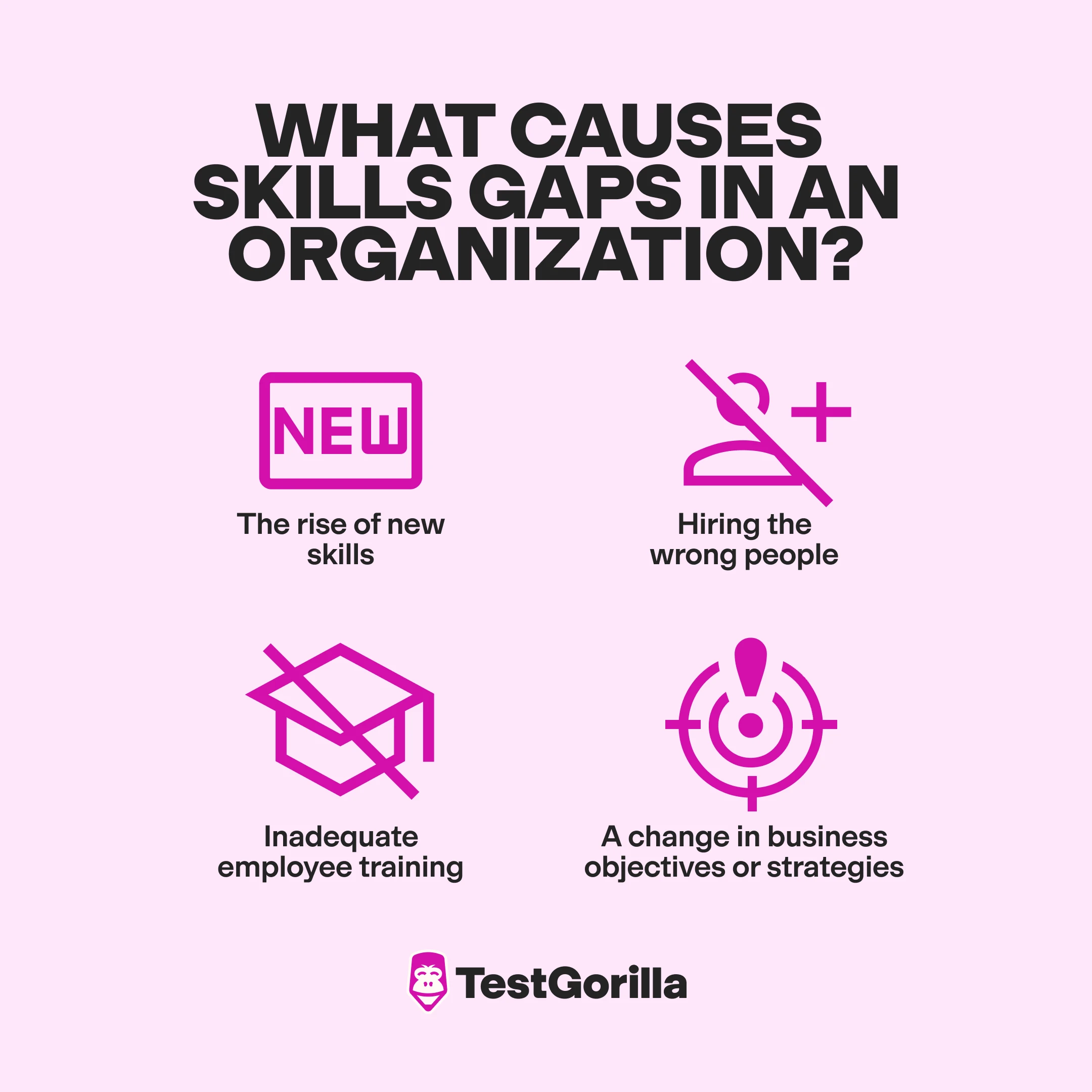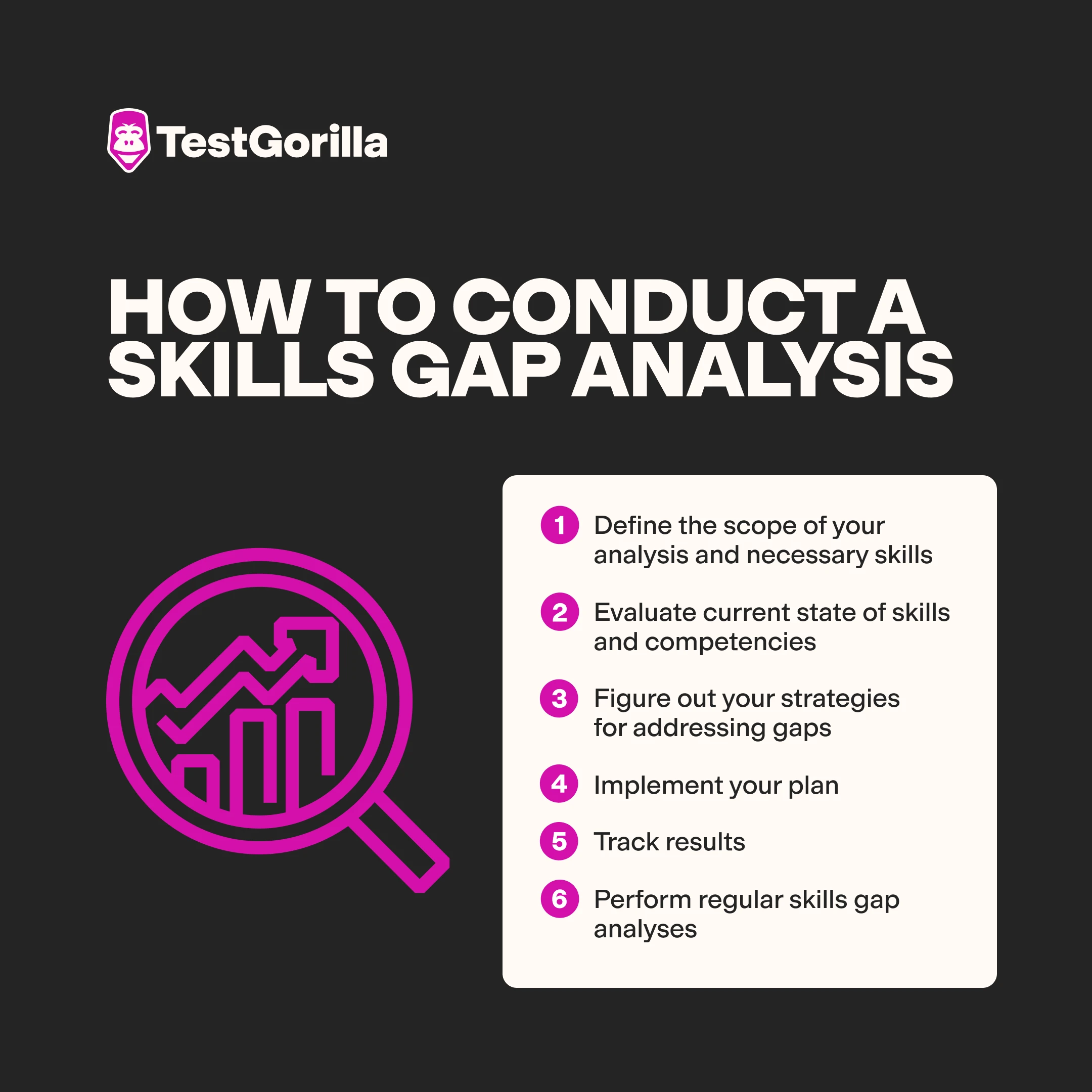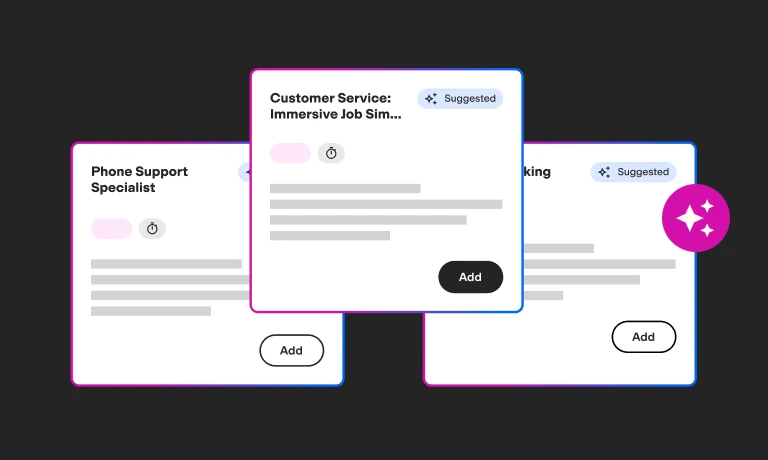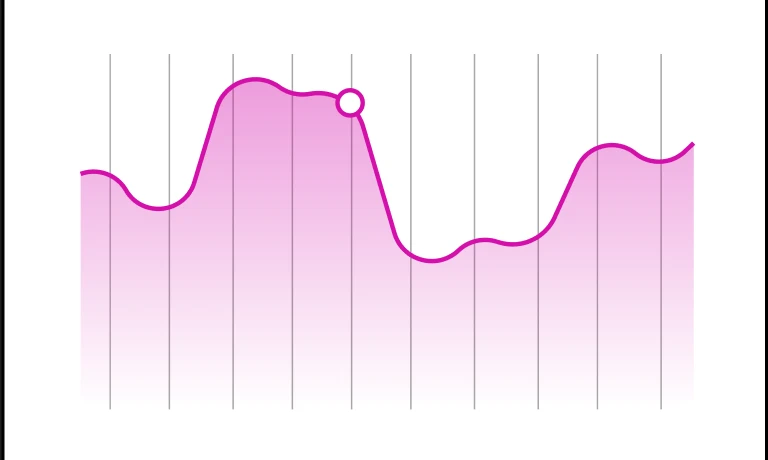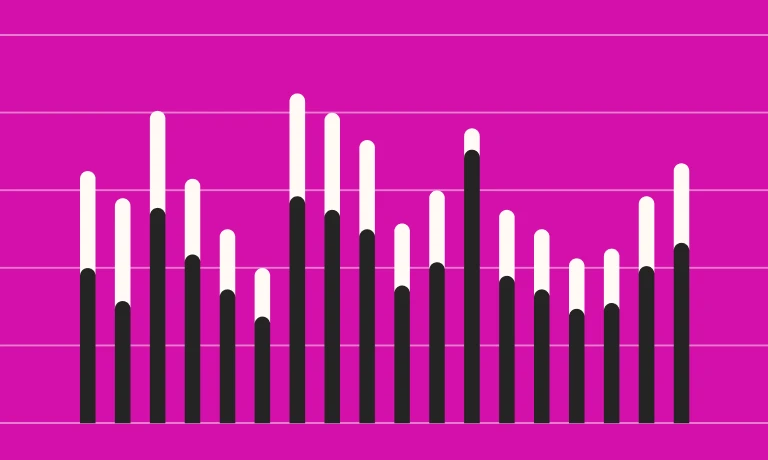According to the Association for Talent Development, 74% of organizations have skills gaps. [1] These are gaps between the skills a workforce has and the skills it needs – which often lead to reduced productivity, bad hires, and more. So, which gaps does your company have?
A skills gap analysis is the best way to identify gaps in your organization and develop effective strategies to address them. This article explains skills gap analyses in detail and gives you a step-by-step guide, actionable tips, and an easy-to-use template.
Key Takeaways
A skills gap analysis involves assessing your workforce’s skills and identifying gaps between their skills and the skills your organization needs.
Regular skills gap analyses are crucial to supporting organizational objectives, improving employee performance, making data-driven workforce planning decisions, and hiring effectively.
The steps to conduct a skills gap analysis include identifying the scope of your analysis, developing strategies to address gaps, and monitoring outcomes.
What is a skills gap analysis?
A skills gap analysis is a systematic approach to assessing and identifying gaps between the skills your workforce currently has and the skills your organization needs now and in the future.
With this info, you can create tactics to address talent gaps in your existing workforce – including training and development, succession planning, and recruitment.
Want to get more value from your recruitment?
Our complete blueprint will provide the tips, strategies, and insights you need to maximize your recruitment ROI.
Skills gaps can occur as a result of:
The rise of new skills. We see this now with AI, which is becoming an essential skill for almost all businesses.
Hiring the wrong people. Organizations that don’t use skills-based hiring may attract and recruit candidates who lack the skills necessary for a role. For example, a job posting that doesn’t list relevant skills may attract candidates with entirely different skill sets.
Inadequate employee training. Without targeted training and personal development plans that align with strategic objectives, employees are unlikely to develop the skills they need to do their jobs.
A change in business objectives or strategies. If your organization moves into a new sector, offers a new product or service, reprioritizes its goals, or adopts new technology or processes, your workforce may need more skills to support this.
So, how do you know when your organization needs a skills gap analysis? Look for signs that your workforce’s existing skills and the skills your organization needs don’t line up. These include:
Failing to meet organizational objectives like performance, quality, or productivity goals
Experiencing high employee turnover
Needing to respond to emerging industry trends
Adopting new technologies or business strategies or processes
The best insights on HR and recruitment, delivered to your inbox.
Biweekly updates. No spam. Unsubscribe any time.
Why is skills gap analysis important?
Performing a skills gap analysis is more than a checkbox exercise. It can offer deep insights into how to enhance and future-proof your workforce.
Taking a reactive approach to your employee’s skills wastes time and money. Rather than waiting for problems to pop up, you can use a skills gap analysis to be proactive.
A skills gap analysis helps you:
Line up skills with business objectives. For example, your investment in training and development can target priority skills employees need for an upcoming project.
Improve employee performance and engagement by making sure employees are equipped with the skills they need to perform at their best. Employees also appreciate employers' interest in and support for their professional development.
Optimize workforce planning. Assessing your workforce’s skills now helps you plan for future growth and organizational change. Skills gap analyses enable you to make data-driven decisions about investment in your workforce.
Stay competitive. Skills gap analyses involve anticipating future trends to prepare proactively and stay ahead of competitors. You can use the insights from your analysis to build an agile workforce with adaptable skills like critical thinking and digital literacy.
Hire more effectively. Understanding your workforce’s current skills and the skills they need helps you identify the best strategies to address gaps. This makes your hiring more effective by increasing internal mobility or finding the best candidates for a role.
Conducting a skills gap analysis
Here are six steps to follow when conducting a skills gap analysis.
1. Define the scope of your analysis and necessary skills
First, understand what you’re analyzing. Are you focusing on the skills of individual employees, specific teams, or your entire workforce?
Then, identify which skills your organization needs now and in the future.
Business goals and objectives are an excellent place to start. Effective skills gap analyses make sure skills line up with – and support – organizational objectives. Speak to leadership to understand the organization’s short and long-term goals, specific upcoming projects, and priority skill areas.
For instance, is adopting AI a key strategic priority? Then focus your analysis on technical competencies – especially AI skills.
Another valuable tool for identifying the skills your organization needs is your job descriptions, which should highlight the skills relevant to the roles you’re hiring.
2. Evaluate skills and competencies
Next, you should assess your organization's current state of skills. There are several ways to do this, including:
Skills assessments. Skills tests can give you a reliable picture of the state of skills in your organization and track it over time.
360-degree evaluations. Speak to each employee’s manager, colleagues, and even clients to understand their skill set.
SWOT analyses. Ask employees to identify their strengths, weaknesses, opportunities, and threats regarding their skill sets.
External evaluations. Engage an external service provider to assess the skills in your organization.
The right method for your business depends on its goals, budget, and in-house experience. For example, while external evaluations provide impartiality, they can be expensive.
3. Figure out your strategies for addressing gaps
Decide which strategies you’ll use to fill skill gaps.
You can do this by focusing on internal mobility within your organization, including:
Reskilling. By helping employees acquire new skills, you can enable them to move into different departments, teams, or roles – for instance, via your internal talent marketplace. For instance, an IT specialist might learn scheduling, budgeting, and more to move into a project management role.
Upskilling. This focuses on leveling up employees’ existing skills – for example, a marketing manager might learn a new digital marketing tool. Read our guide on the latest upskilling statistics to inform your strategy.
Mentoring. Partnering employees with more experienced workers can improve or develop their skills.
The advantage of choosing an internal mobility strategy is that it’s usually a quicker and more cost-effective way to address skill gaps. According to Springboard, upskilling (75%) and reskilling (62%) are currently the most popular tactics for HR leaders to address skills gaps.
Alternatively, you can also look to external solutions, like:
Hiring new staff, including hiring for adjacent skills.
Outsourcing – for instance, by hiring freelancers or engaging a consultant for a specific project.
4. Implement your plan
Have you got your strategies? Create a detailed plan for how to implement them.
If you’re focusing on internal mobility, work with employees to make professional development plans to identify and track their training goals.
If your strategy involves hiring new staff, try a skills-based approach. Putting skills at the center of your hiring process supports targeted recruitment. This way, you can attract and find people with the exact skills you need to join your team.
5. Track results
As the saying goes, you can’t improve what you don’t measure. Tracking the results of your efforts reveals what’s working – so you can replicate it – and what isn’t – so you can make the necessary adjustments.
You can measure the impact of strategies to address skill gaps by using one or more of the following approaches:
Track key performance indicators (KPIs) by using predefined metrics that line up with business objectives. Upskilling your sales team in a new customer relationship management software? Track client retention rates.
Regularly audit employees’ skills to see which skills they’re acquiring and developing individually and as a team.
Have managers complete performance reviews for insights into employees’ skills development.
6. Perform regular skills gap analyses
A skills gap analysis gives you a snapshot of the state of skills in your organization at that point in time. However, this can change as employees join or leave the company, you deliver more training, and market demands for skills evolve.
So, you should conduct skills gap analyses regularly to ensure you always have your finger on the pulse regarding your workforce’s skills. Do them at least annually – or, ideally, twice a year.
This approach gives you real-time information to help you make informed decisions about your investment in learning and development and talent strategies. It also enables you to respond as new in-demand skills evolve.
Skills gap analysis example
Let’s say an organization is looking for two new account managers to support a new client.
The company decides to do a skills gap analysis to decide the best way to hire these account managers. These are the steps it may follow:
The company identifies the skills required for account managers based on previous job descriptions for these roles.
It then assesses its workforce’s skills by conducting 360-degree evaluations. These evaluations highlight that some employees in project management roles have several transferable skills relevant to an account manager role.
As a result of this analysis, the business decides to move one existing project manager into an account manager role – providing them with targeting training to prepare them fully for the role.
To fill the other role, the company decides to recruit externally using TestGorilla’s talent assessments to find candidates with the necessary skills.
Skills gap analysis template and checklist
To get you started, we’ve prepared a skills gap analysis template you can use for the whole organization or single departments.
Employee name | Job title and department | Current skills and proficiency | Desired skills and proficiency | Skill gap (yes/no) | Impacts | Plan to address gap | Person responsible | Deadline |
John Smith | Marketing Coordinator (Marketing) | SEO - intermediate | SEO - advanced | Yes | Online content not optimized; lower search engine rankings | Shadow Jane Doe for 2 days to refresh SEO techniques | CMO | 01/01/2025 |
Social media marketing - advanced | Social media marketing - advanced | No | n/a | n/a | - | - | ||
Email campaigns - intermediate | Video creation - intermediate | Yes | Additional cost of engaging contract external videographers | Send to external training session OR hire part-time external videographer | CMO | 01/03/2025 | ||
Employee 2 | ||||||||
Employee 3 |
You can easily adapt this table to suit your needs. For instance, say you want to look at the skills of specific teams rather than individual employees. Simply modify the first column heading so it says “Team name” rather than “Employee name.” In addition to renaming columns, you can also add or delete columns – and add as many rows as you need.
Level up your skills gap analysis with talent assessments
Skills gap analyses highlight gaps between the skills your employees have and the skills your workforce needs. Conducting regular analyses gives you strategic insights and priority areas to address. The result? More effective investments in learning, development, and hiring – and a future-proofed business that stays ahead of the competition.
The takeaway? You can’t afford not to do regular skills gap analyses. Follow the six steps outlined above and use our handy template to get started today.
To learn more about how TestGorilla’s talent assessments can help with filling skills gaps through hiring, book a demo or sign up for free.
FAQs
Is a skills gap analysis the same as a skills matrix?
A skills matrix – assessing your employees’ skills and competencies — is one step in a skills gap analysis. Typically, a skills matrix is a table with employee’s names and roles and a list of relevant skills. In each column, you score employees’ proficiency in the relevant skill.
What are the biggest skills gaps?
According to the Association for Talent Development, leadership and executive-level skills, managerial and supervisory skills, process improvement and project management skills, and communication and interpersonal skills are the most common skills gaps in organizations.
Sources
[1] Association for Talent Development, “ATD Research: Critical Skills Gaps Still Exist in Organizations,” 24 April 2024, https://www.td.org/content/press-release/atd-research-critical-skills-gaps-still-exist-in-organizations.
You've scrolled this far
Why not try TestGorilla for free, and see what happens when you put skills first.



